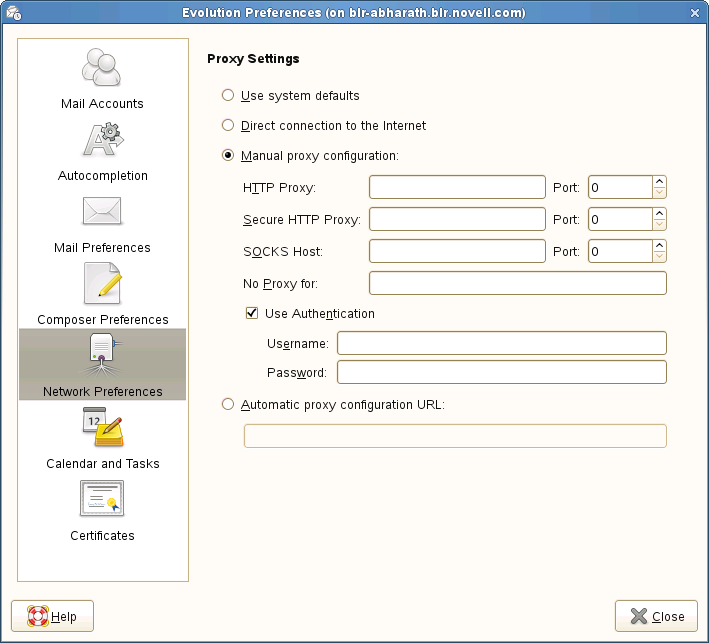9.7 Network Preferences
This interface lets you configure your network proxy settings.

Use the following four options to configure the proxy settings:
Use system defaults: Select this option to use the system wide proxy settings configured through Control Center > Network Proxies in GNOME. When this option is selected, Evolution uses the proxy settings in the /system/http_proxy and /system/proxy/gconf keys.
IMPORTANT:If these keys do not reflect the settings configured through Control Center > Network Proxies, Evolution does not work with the proxy and you must either update these gconf keys or choose Manual proxy configuration.
Direct connection to the Internet: Select this option to connect directly to the internet.
Manual proxy configuration: This option helps you customize proxy settings regardless of the desktop you use (GNOME or KDE). Specify hosts and ports for HTTP and optionally for other protocols. In the No Proxy Domain field, specify that comma-separated domain names do not go through the configured proxy server. You can specify patterns like *.example.com or.example.com in the No Proxy Domain list. Specify a username and password, and if the proxy server requires authentication, select Use Authentication to enable the username and password fields. The customized proxy settings are as follows:
Automatic proxy configuration URL: Specify the automatic proxy configuration URL for Evolution to use in the autoconfig script to configure the proxy.